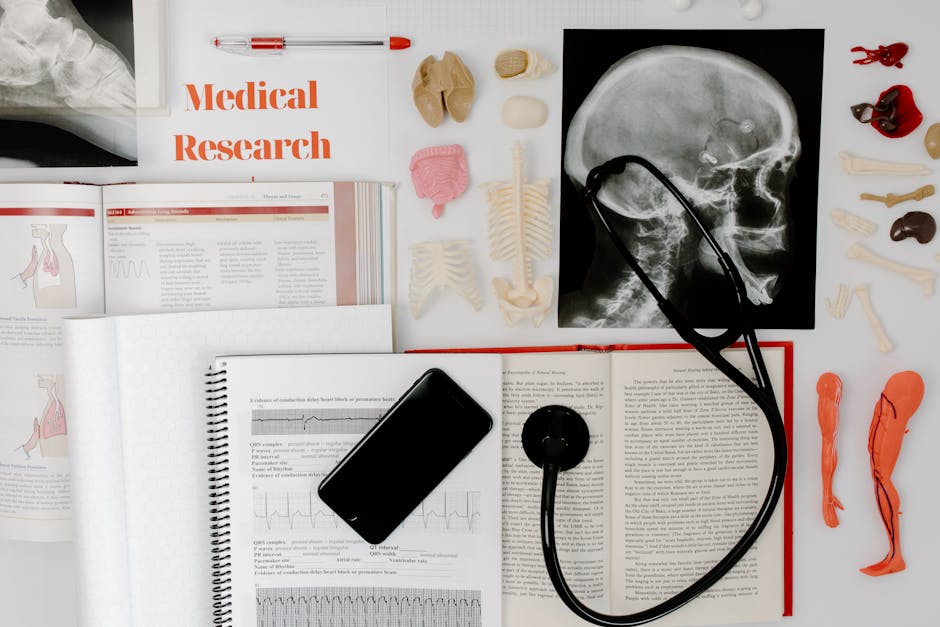
Introduction
In the digital era, healthcare organizations are inundated with vast volumes of unstructured data—clinical notes, radiology reports, discharge summaries, and patient histories. While these documents contain critical information, their unstructured nature poses a significant barrier to timely, accurate data extraction and analysis. Manual review is labor-intensive, error-prone, and unsustainable at scale, threatening both operational efficiency and patient safety. Enter Natural Language Processing (NLP): a branch of artificial intelligence that enables computers to interpret, extract, and structure meaningful information from human language.
The central problem addressed by this article is how to efficiently and accurately extract actionable data from the overwhelming flow of medical documents. We examine the challenges of unstructured clinical text, the limitations of traditional methods, and the promise of NLP-driven solutions. This topic is of paramount importance for healthcare professionals, data scientists, administrators, and policymakers seeking to unlock the full potential of medical data for improved patient care, research, and operational excellence.
Readers will gain a comprehensive understanding of the state-of-the-art NLP techniques for medical data extraction, real-world applications, best practices, practical implementation strategies, and a critical assessment of current challenges and future trends. Our thesis: NLP is not merely a technological upgrade; it is a transformative force reshaping the landscape of medical data extraction, with profound implications for the future of healthcare.
Background and Context
The Evolution of Medical Data and the Rise of NLP
The healthcare sector has always been data-rich, but the digitization of medical records has exponentially increased the volume and complexity of available information. According to industry estimates, approximately 80% of healthcare data is unstructured, residing in narrative clinical notes, scanned documents, and free-text reports. Historically, extracting relevant information from these sources required manual abstraction—a process fraught with inefficiency and inconsistency.
Natural Language Processing (NLP) emerged as a response to these challenges, leveraging computational linguistics and machine learning to automate the interpretation of human language. Early efforts focused on rule-based systems, which, while precise, struggled with scalability and linguistic variability. The advent of statistical and machine learning approaches, and more recently, deep learning and large language models, has dramatically enhanced the accuracy and flexibility of NLP in healthcare.
Key concepts in this domain include:
- Unstructured Data: Information not organized in predefined fields, such as free-text notes.
- Named Entity Recognition (NER): Identifying and classifying key entities (e.g., diseases, medications) within text.
- Ontology Linking: Mapping extracted terms to standardized medical vocabularies (e.g., SNOMED CT, RxNorm).
- Negation Detection: Recognizing when a condition or symptom is absent, not present.
Despite significant progress, the field still faces gaps: variability in clinical language, ambiguity, negation, and the need for domain-specific adaptation. Moreover, regulatory, privacy, and interoperability concerns complicate large-scale deployment. This article aims to bridge these gaps by providing a holistic, expert-driven analysis of NLP’s role in medical data extraction.
Main Content
1. The Landscape of Medical Documents: Challenges and Opportunities
Medical documents encompass a wide array of formats: electronic health records (EHRs), physician notes, pathology and radiology reports, lab results, and patient-generated health data. Each presents unique challenges for data extraction:
- Linguistic Complexity: Medical jargon, abbreviations, and context-dependent meanings abound. For example, “discharge” can refer to both a bodily fluid and a hospital release.
- Ambiguity and Polysemy: Many clinical terms have multiple meanings, requiring contextual interpretation.
- Negation and Uncertainty: Statements like “no evidence of pneumonia” must be accurately parsed to avoid false positives.
- Handwritten and Scanned Documents: Optical Character Recognition (OCR) is often necessary before NLP can be applied.
These challenges underscore the need for robust, adaptable NLP systems that can handle the nuances of medical language and document diversity.
“The successful integration of NLP in healthcare hinges on a deep understanding of the unique linguistic challenges. This understanding is best achieved through the collaborative efforts of professionals and NLP experts.”
2. Core NLP Techniques for Medical Data Extraction
Modern NLP systems for healthcare employ a blend of techniques:
- Rule-Based Approaches: Utilize domain-specific rules and ontologies for entity extraction. Highly interpretable but limited in scalability and adaptability.
- Machine Learning Models: Statistical models (e.g., SVMs, CRFs) trained on annotated corpora to recognize patterns and entities. More flexible but require substantial labeled data.
- Deep Learning and Large Language Models: Neural architectures (e.g., LSTMs, Transformers, BERT variants) excel at capturing context, semantics, and handling linguistic variability. These models can achieve F1 scores above 0.90 in certain clinical concept extraction tasks.
- Hybrid Systems: Combine rule-based and machine learning methods, leveraging the strengths of both for improved accuracy and generalization, especially in low-resource settings.
For example, a hybrid pipeline might use dependency parsing and NER to extract medication and symptom information from patient notes, linking them to standardized vocabularies for downstream analysis.
Performance is typically measured using metrics such as precision, recall, and F1-score. Studies report that automated coding tools can achieve accuracy rates exceeding 85%, while deep learning models for disease extraction have reached F-measures above 0.95 for specific conditions.
3. Real-World Applications and Case Studies
The practical impact of NLP-driven data extraction is evident across healthcare domains:
- Clinical Documentation Improvement: NLP automates the identification of diagnoses, procedures, and medications from physician notes, reducing manual workload and accelerating billing processes.
- Risk Prediction and Population Health: Mining historical patient records enables identification of high-risk patients, reducing readmission rates by up to 20% in some studies.
- Patient Sentiment Analysis: Extracting sentiment from patient feedback has led to a 73% improvement in patient satisfaction scores among organizations leveraging this data.
- Automated Claims Processing: AI-powered platforms extract and validate data from medical bills and claims, streamlining revenue cycle management and reducing administrative costs.
- Clinical Research Enablement: Automated data abstraction from thousands of patient records accelerates research and improves data quality, making large-scale studies feasible.
Case Study: A large healthcare system implemented a custom NLP solution to process millions of unstructured clinical notes, enabling clinicians to retrieve relevant patient information in seconds and freeing up an estimated 15 hours per week per staff member for direct patient care.
“NLP may facilitate clinical research studies that would otherwise be infeasible due to the costs of manual medical record abstraction.”
4. Strengths, Limitations, and Critical Analysis
Strengths:
- Scalability: NLP systems can process vast datasets rapidly, far exceeding human capacity.
- Consistency: Automated extraction reduces variability and errors inherent in manual abstraction.
- Timeliness: Enables real-time or near-real-time data extraction for clinical decision support.
- Integration: Structured outputs can be seamlessly integrated into EHRs and analytics platforms.
Limitations:
- Data Quality: NLP performance is highly dependent on the quality and consistency of input documents.
- Linguistic Ambiguity: Context-dependent meanings and abbreviations can lead to misclassification.
- Generalizability: Models trained on one institution’s data may not perform well elsewhere without adaptation.
- Regulatory and Privacy Concerns: Ensuring compliance with HIPAA, GDPR, and other regulations is non-trivial.
Expert Perspective: While state-of-the-art NLP systems demonstrate high accuracy in controlled settings, real-world deployment requires continuous monitoring, domain adaptation, and collaboration between clinicians and data scientists.
5. Comparative Approaches and Evolving Paradigms
| Approach | Strengths | Weaknesses | Best Use Cases |
|---|---|---|---|
| Rule-Based | High interpretability, domain knowledge integration | Poor scalability, limited adaptability | Small-scale, high-precision tasks |
| Machine Learning | Flexible, handles variability | Requires large labeled datasets | Entity recognition, classification |
| Deep Learning | Contextual understanding, high accuracy | Resource-intensive, less interpretable | Complex information extraction, sentiment analysis |
| Hybrid | Combines strengths, adaptable | Complex implementation | Low-resource settings, nuanced tasks |
The field is rapidly shifting toward hybrid and deep learning approaches, with large language models (LLMs) offering unprecedented capabilities in understanding medical context and generating structured outputs from free text.

6. Implementation Best Practices and Regulatory Considerations
Effective deployment of NLP for medical data extraction requires:
- Objective Definition: Clearly articulate the goals (e.g., improving patient outcomes, reducing costs).
- Data Preparation: Ensure high-quality, representative training data; address biases and privacy concerns.
- Tool Selection: Choose NLP platforms that align with scalability, security, and compliance needs.
- Model Training and Validation: Use real-world data, robust evaluation metrics, and continuous feedback loops.
- Stakeholder Engagement: Involve clinicians, IT, and administrators throughout the process.
- Compliance: Adhere to HIPAA, GDPR, and other relevant regulations; ensure data de-identification and security.
- Continuous Monitoring: Regularly audit model performance and adapt to evolving medical language and practices.
Pilot projects, interoperability, and ROI measurement are recommended to ensure successful, scalable implementation.
Practical Applications
NLP for data extraction from medical documents is already transforming healthcare operations and patient care. Key applications include:
- Automated Clinical Documentation: NLP systems transcribe and structure physician notes, reducing administrative burden and error rates.
- Real-Time Decision Support: Extracted data feeds into clinical decision support systems, enabling evidence-based recommendations.
- Population Health Management: Aggregated, structured data supports risk stratification, early intervention, and public health surveillance.
- Research Acceleration: Automated abstraction from large datasets enables rapid cohort identification and outcome tracking.
- Fraud Detection and Billing Accuracy: NLP identifies discrepancies and potential fraud in billing and claims data.
Tips and Best Practices:
- Start with well-defined, high-impact use cases to demonstrate value and build organizational support.
- Invest in high-quality annotation and domain-specific model training for optimal accuracy.
- Ensure seamless integration with existing EHR and analytics systems via robust APIs.
- Engage interdisciplinary teams, including clinicians and data scientists, for model development and validation.
- Address privacy, security, and compliance proactively to build trust and avoid regulatory pitfalls.
Challenges and Solutions: Implementation hurdles include data heterogeneity, evolving medical terminology, and integration complexity. Overcoming these requires continuous model retraining, stakeholder engagement, and leveraging cloud-based, scalable architectures.
Future Perspectives
The future of NLP in medical data extraction is marked by rapid innovation and expanding horizons:
- Advanced Large Language Models: Next-generation LLMs will offer even greater contextual understanding, multilingual capabilities, and nuanced reasoning.
- Real-Time, Multimodal Data Integration: NLP will increasingly merge with image, sensor, and genomic data for comprehensive patient profiles.
- Personalized and Predictive Analytics: Extracted data will power personalized treatment recommendations and proactive risk assessment.
- Global Collaboration: Standardized, interoperable NLP solutions will facilitate cross-institutional research and global health initiatives.
However, challenges remain: ensuring fairness, transparency, and explainability in AI models; addressing data privacy and consent; and adapting to the ever-evolving landscape of medical knowledge. Ongoing research is needed to refine algorithms, expand annotated datasets, and develop robust evaluation frameworks.
Ready to Leverage NLP for Your Medical Insights?
At 2Simple, we understand the transformative power of natural language processing in extracting valuable insights from medical documents. Our experienced team is here to help you harness modern technologies tailored to your unique needs.
Whether you’re looking for custom web applications, CRM solutions, or business process automation, we have the expertise to elevate your project.
Summary
Natural Language Processing has emerged as a cornerstone technology for extracting structured, actionable insights from the vast ocean of unstructured medical documents. By automating labor-intensive processes, enhancing data quality, and enabling real-time analytics, NLP is revolutionizing clinical documentation, research, and patient care. While significant challenges persist—ranging from linguistic complexity to regulatory compliance—the field is advancing rapidly, driven by innovations in deep learning, hybrid modeling, and large language models.
The central thesis holds: NLP is not merely a tool for efficiency; it is a transformative enabler of data-driven healthcare. Organizations that strategically invest in NLP for data extraction will unlock new levels of operational excellence, research capability, and patient-centered care. The journey requires careful planning, interdisciplinary collaboration, and a commitment to continuous improvement—but the rewards are profound.
As we look to the future, embracing NLP is essential for any healthcare entity seeking to thrive in an increasingly complex, data-rich environment. The time to act is now.
FAQ
1. What types of medical documents can NLP process?
NLP can handle a wide range of documents, including electronic health records (EHRs), clinical notes, discharge summaries, pathology and radiology reports, lab results, patient intake forms, and even scanned or handwritten documents (with OCR integration).
2. How accurate are NLP systems for medical data extraction?
Accuracy varies by use case and implementation. State-of-the-art systems can achieve F1 scores above 0.90 for specific entity extraction tasks. However, performance depends on data quality, model training, and domain adaptation. Continuous validation and improvement are essential.
3. What are the main challenges in implementing NLP for medical data extraction?
Key challenges include handling medical jargon and abbreviations, context-dependent meanings, negation detection, data heterogeneity, privacy and regulatory compliance, and integration with existing IT systems.
4. How does NLP handle privacy and regulatory requirements?
Compliance with regulations like HIPAA and GDPR is critical. NLP systems must ensure data de-identification, secure processing, and auditability. Choosing vendors and solutions with robust security and compliance features is essential.
5. Can NLP be used for real-time clinical decision support?
Yes. Advanced NLP systems can extract and structure data in real time, feeding into clinical decision support systems to provide evidence-based recommendations and alerts during patient care.
6. What is the role of clinicians in developing NLP systems?
Clinicians play a vital role in annotating training data, validating model outputs, and ensuring that NLP systems align with clinical workflows and priorities. Collaboration between clinicians and data scientists is key to success.
7. How can organizations get started with NLP for data extraction?
Begin with a clear objective, pilot high-impact use cases, invest in quality data annotation, select scalable and compliant tools, and engage stakeholders throughout the process. Continuous monitoring and adaptation are crucial for long-term success.

Sources
- Natural language processing systems for extracting information from electronic health records about activities of daily living. JAMIA Open, 2024.
- Natural language processing in electronic health records: A review. AIH, 2024.
- The Interplay between Natural Language Processing (NLP) and Healthcare. IJISAE, 2024.
- Key NLP applications in healthcare – N-iX, 2024.
- NLP Strategies for Streamlining Healthcare Data Extraction | MoldStud, 2024.
- Healthcare Data Extraction: How AI and IDP Changing It – AlgoDocs, 2025.
- NLP to Improve Accuracy and Quality of Dictated Medical Documents, AHRQ, 2019.
- Natural Language Processing of Electronic Health Records to Measure Goals-of-Care Discussions, JAMA Network Open, 2023.
- 13 Practical Applications Of NLP In Healthcare You Can’t Miss, Tezeract, 2025.
- About NLP In Healthcare: 6 Techniques, Cases, Challenges – SPsoft, 2025.
- NLP in Healthcare: 2025 Trends and Insights – BytePlus, 2025.
- Advanced Natural Language Processing in Healthcare Solutions, Veritis, 2024.
- NLP in Healthcare: 7 Use Cases You May Not Know About, LitsLink, 2025.
- Extracting Medical Information From Free-Text and Unstructured Patient-Generated Health Data, PMC, 2023.
- Clinical Information Extraction Applications: A Literature Review, PMC, 2017.
- Healthcare NLP for Medical Records | Eightgen AI Case Studies, 2025.
- Applications of Natural Language Processing in Healthcare Industry, LinkedIn, 2023.
- Healthcare NLP: The Secret to Unstructured Data’s Full Potential, HealthCatalyst, 2018.
- 8 Use Cases for Natural Language Processing in Healthcare, KMS Healthcare, 2025.
